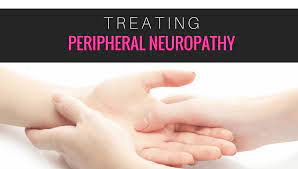
Exploring Peripheral Neuropathy Treatments: Options for Relief and Comfort
Introduction
Peripheral neuropathy is a condition that affects the nerves, leading to pain, tingling, and numbness in the extremities. While there is no single “one-size-fits-all” solution for peripheral neuropathy, there are various treatments available that can provide relief and improve the quality of life for those living with this condition. In this article, we will explore the different peripheral neuropathy treatment and therapeutic approaches designed to address its symptoms.
Peripheral Neuropathy Treatments: A Multifaceted Approach
- Medications:
- Medications play a central role in managing peripheral neuropathy symptoms. This includes over-the-counter pain relievers, prescription medications like gabapentin and pregabalin, and certain antidepressants that can help alleviate nerve pain.
- Physical Therapy:
- Physical therapy is an essential part of neuropathy treatment. It can help improve muscle strength, flexibility, and balance, reducing the risk of falls and enhancing overall mobility.
- Transcutaneous Electrical Nerve Stimulation (TENS):
- TENS therapy involves the use of a small device that delivers low-voltage electrical currents to the affected areas, helping to alleviate pain and discomfort.
- Lifestyle Changes:
- Lifestyle modifications, such as maintaining blood sugar levels for individuals with diabetic neuropathy, quitting smoking (which can worsen symptoms), and adopting a balanced diet, are crucial for managing neuropathy.
- Nutritional Supplements:
- Certain nutritional supplements, such as alpha-lipoic acid, acetyl-L-carnitine, and B vitamins, have shown promise in reducing symptoms and promoting nerve health.
- Transdermal Medications:
- Some topical treatments, like lidocaine and capsaicin creams, can provide localized pain relief when applied directly to the affected areas.
- Nerve Growth Factors:
- Emerging therapies involving nerve growth factors are being explored to stimulate nerve regeneration and potentially offer more targeted approaches to peripheral neuropathy treatments.
A Holistic Approach
- Pain Management:
- Effective pain management is crucial for improving the quality of life for individuals with neuropathy. Pain relief may be achieved through a combination of medications and non-pharmacological treatments.
- Underlying Condition Management:
- Addressing the underlying causes of neuropathy, such as diabetes, autoimmune disorders, or infections, can prevent further nerve damage and improve symptoms.
- Regular Monitoring:
- Regular check-ups and ongoing monitoring by healthcare professionals are important to track the progression of neuropathy and adjust treatment plans accordingly.
- Support and Education:
- Support groups and education about peripheral neuropathy can help individuals better understand their condition and connect with others who share similar experiences.
Conclusion
Peripheral neuropathy is a challenging condition that can significantly impact a person’s quality of life. While there is no single cure, a comprehensive treatment plan, including medications, physical therapy, lifestyle changes, and potential emerging therapies, can provide relief and help individuals manage their symptoms effectively. It is essential for those living with neuropathy to work closely with healthcare professionals to develop a personalized treatment plan that addresses their unique needs and allows them to enjoy a better quality of life.



